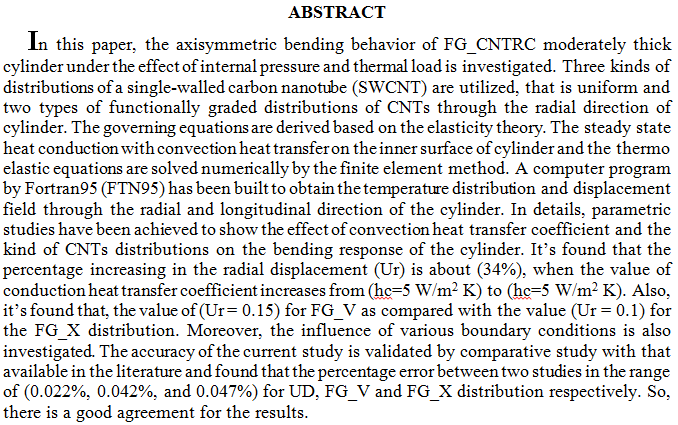
A novel analytical method is developed for the determination of azithromycin. The method utilizes continuous flow injection analysis to enhance the chemiluminescence system of luminol, H2O2, and Cr(III). The method demonstrated a linear dynamic range of 0.001–100 mmol L-1 with a high correlation coefficient (r) of 0.9978, and 0.001–150 mmol L-1 with a correlation coefficient (r) of 0.9769 for the chemiluminescence emission versus azithromycin concentration. The limit of detection (L.O.D.) of the method was found to be 18.725 ng.50 µL−1 based on the stepwise dilution method for the lowest concentration within the linear dynamic range of the calibration graph. The relative standard deviation (R.S.D. %) for n = 6 was less than 1.2%
... Show More (1)
(1)
 (1)
(1)
 (13)
(13)
 (7)
(7)
The issue of epistemology is one of the theological issues that were and still is a relentless pursuit of knowledge, knowing the true knowledge of certainty. Therefore, it formed a main focus because of its great importance expressing the deep desire of the human soul to explore the self and reality and answer all the questions that it may raise. Knowledge is the highest function. For man to exist.
Therefore, the establishment of epistemology was general in knowledge, a characteristic that was distinguished, as it is an ancient and renewed subject that is still being raised and raised, although there are many methods of treating it and sacred solutions to it. To finally prove its potentia
... Show More (2)
(2)
: zonal are included in phraseological units, form metaphorical names for a person, give him various emotional and evaluative characteristics. This article examines the topic of zoomorphic metaphors that characterize a person in the Russian and Arabic languages in the aspect of their comparative analysis, since the comparative analysis of the metaphorical meanings of animalisms is an important method for studying cultural linguistics, since zoomorphic metaphors are a reflection of culture in a language.
A condense study was done to compare between the ordinary estimators. In particular the maximum likelihood estimator and the robust estimator, to estimate the parameters of the mixed model of order one, namely ARMA(1,1) model.
Simulation study was done for a varieties the model. using: small, moderate and large sample sizes, were some new results were obtained. MAPE was used as a statistical criterion for comparison.
The City of Ember is a very interesting novel that is although intended for young readers, have so many layers and messages that are misunderstood. In this research, both the novel and the film adaptation are studied with the intent to decode the warning messages that the novelist and the director tried to introduce to the audience. The research studies four vital messages; the first message is that history repeats itself for the novel has many allusions to the history of Jews and their painful holocaust and even goes back in history the days of Moses and the Exodus, the second message tackles the conspiracy theory that states nothing happens by accident and that everything is planned and connected hence comes the third message
... Show More (4)
(4)
 (2)
(2)
This research investigated the effect of adding two groups of reinforcement materials, including bioactive materials Hydroxyapatite (HA) and halloysite nanoclay and bioinert materials Alumina (AL2O3) and Zirconia (ZrO2), each of them with various weight ratios (1,2,3,4 &5)% to the polymer matrix PMMA. The best ratios were selected, and then a hybrid was preparing Composite red from the best ratios from each group. Thermal properties, including thermal conductivity and Thermomechanical Analysis (TMA) technology, have been studied. The results showed that adding 3% Hydroxyapatite (HA) and 5% halloysite nanoclay to the polymethacrylate (PMMA) mer leads to an increase in thermal conductivity. It was also found from the Thermomechanical Analysis
... Show More (2)
(2)
 (3)
(3)
